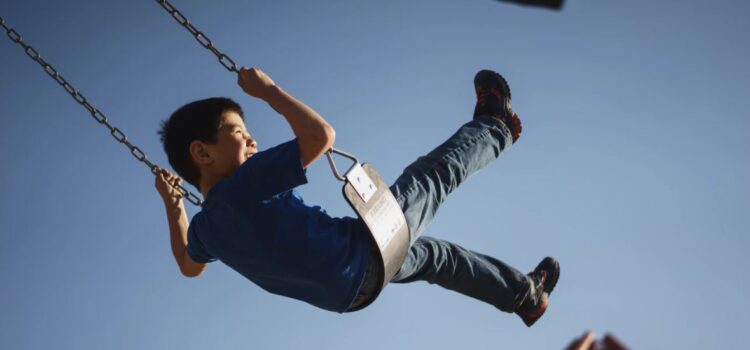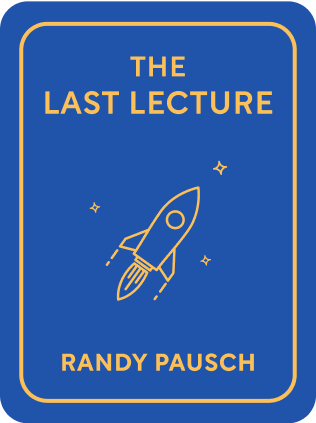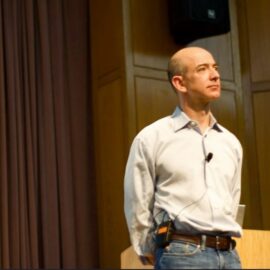

This article is an excerpt from the Shortform book guide to "The Last Lecture" by Randy Pausch. Shortform has the world's best summaries and analyses of books you should be reading.
Like this article? Sign up for a free trial here .
Why was Randy Pausch’s Last Lecture titled, “Really Achieving Your Childhood Dreams”? How did Pausch manage to achieve his six childhood dreams?
Randy Pausch had six childhood dreams: Winning the biggest stuffed animals at the carnival, playing in the NFL, writing an entry in the World Book Encyclopedia, being Captain Kirk of Star Trek, experiencing zero gravity, and becoming a designer or “Imagineer” at Disney. In “Really Achieving Your Childhood Dreams,” he explained how, in various ways, he achieved them all.
Keep reading to learn about Pausch’s lecture, “Really Achieving Your Childhood Dreams.”
Really Achieving Your Childhood Dreams
Randy Pausch’s Last Lecture was titled, “Really Achieving Your Childhood Dreams.” Always an imaginative child, Pausch had six dreams: Winning the biggest stuffed animals at the carnival, playing in the NFL, writing an entry in the World Book Encyclopedia, being Captain Kirk of Star Trek, experiencing zero gravity, and becoming a designer or “Imagineer” at Disney. In various ways, he achieved them all.
Stuffed Animals
Pauche’s “Really Achieving Your Childhood Dreams” speech began with his early childhood. When Pausch was young, he and his father took pride in winning giant stuffed animals at carnivals and amusement parks. Carrying around a giant stuffed animal won in a game of skill, such as shooting at cutouts of ducks or tossing rings at bottles, always drew admiring looks.
There were only two requirements for becoming the envy of the carnival: a pocket full of change and a long reach, which helped during the ring toss (you could lean toward the target and throw). Pausch says he never cheated, although he amassed so many stuffed animals and posed in so many photos with them that others sometimes doubted he’d won them all.
He displayed some of them at his Last Lecture and invited audience members to take them afterward—he didn’t want his wife to have to deal with the clutter of oversize stuffed animals after he died. After the lecture, he learned that a female student with cancer had taken one of them, an elephant. Pausch found it appropriate because cancer was so often the proverbial elephant in the room.
The NFL
The second dream in “Really Achieving Your Childhood Dreams” was about the NFL. As a nine-year-old, Pausch wanted to be an NFL football player. While he didn’t play professionally, he said he learned more from not achieving that dream than from some other dreams he did achieve.
Three important lessons he learned from playing in a youth league coached by a former Penn State linebacker were:
- Fundamentals: You can’t accomplish anything unless you learn the basics first. His coach had the team practice their skills without any footballs on the field—because even when you have 22 players on the field, only one is touching the football at any given time. There are many roles to be learned.
- Feedback: When you know you’re doing something badly, but no one is criticizing you, it means people have given up on you. That was the advice an assistant coach gave Pausch after a practice in which the coach had pushed him hard. Your critics are often the ones who care about you and want you to improve.
- Hard work: While authorities often urge parents and coaches to build children’s self-esteem, that’s not something you can give them. They develop it only when they confront something they can’t do, and work hard until they can do it. Pausch’s coach taught him that if you work hard, you’ll be able to do things tomorrow that you can’t do today.
Although Pausch thought he was learning football, he was learning how to live.
The World Book
Pausch loved the World Book Encyclopedia and pored over it as a child. Buying it, along with regular updates, was a great expense for his parents, but to him, it was a “gift of knowledge.” He always wondered about the experts who wrote the entries, particularly the obscure ones in Volume Z; his dream was to be invited to write an entry.
Years later, as a Carnegie Mellon professor, he was invited to write a section on virtual reality, which he did. Although Wikipedia and other online information sources have largely replaced traditional encyclopedias, Pausch enjoyed occasionally taking his kids to a library and showing them his entry.
Captain Kirk
As a boy with an interest in science, Pausch loved the TV show Star Trek and its hero, Captain Kirk, as well as the show’s space-age gadgets, including pocket communications devices much like today’s smartphones. Later in life, he applied leadership lessons he’d learned from the Captain Kirk character—for instance, remaining cool under pressure, setting the tone, having a vision, inspiring the troops, and delegating.
Pausch never played or became Captain Kirk, but he met his idol when actor William Shatner, the original Captain Kirk, visited his virtual reality lab at Carnegie Mellon. Shatner wanted to learn about the latest technology for a book he was co-authoring about Star Trek devices that foreshadowed real technological advances. For the visit, Pausch and his students built a virtual reality replica of the bridge of the starship Enterprise.
During his cancer treatment, Pausch remembered a line from the Star Trek movie The Wrath of Khan, in which Kirk commented that he didn’t believe in “the no-win scenario.” Later, Shatner sent him a signed photo of Captain Kirk inscribed with that line when he learned of Pausch’s diagnosis.
Zero Gravity
Astronauts were popular heroes when Pausch was growing up in the 1960s and 1970s. While many boys aspired to be astronauts, Pausch ruled that out because he’d heard that NASA only accepted applicants with perfect eyesight (he wore glasses). However, what interested him even more was the thought of being weightless.
Later, he learned that NASA had a rocket simulator nicknamed the “vomit comet,” in which visitors get to experience 20 seconds of something very similar to zero gravity. College students could apply to conduct experiments in the simulator. So Pausch’s students at Carnegie Mellon submitted a virtual reality experiment and it was approved. The catch was that NASA didn’t allow teachers to go onboard with their students. But Pausch didn’t give up—he studied the rules and learned that local journalists could accompany students, so he filled out a form identifying himself as a media representative. This was technically accurate because, after the visit, he shared video and a report with journalists.
The Imagineers
Pausch made a memorable childhood trip to Disneyland in 1969 when he was eight. As his interest in science and engineering developed, he dreamed of becoming one of The Imagineers and designing Disney rides and attractions.
Years later, after receiving a sabbatical for virtual reality research, he talked Disney into accepting him for six months to work on a secret Aladdin attraction involving a magic carpet ride. He had some trouble getting a Carnegie Mellon dean to approve such an unconventional study request, but he persisted and his experience with The Imagineers was a highlight of his life. He wore his Disney Imagineer’s shirt when he delivered his Last Lecture.
Really Achieving His Childhood Dreams
Pausch never lost touch with his childhood dreams and, in various ways, he achieved them all before he passed away of pancreatic cancer.
He titled his Last Lecture “Really Achieving Your Childhood Dreams.” In it, he advised listeners to carry around a Crayon as a reminder of childhood aspirations and to never give up.

———End of Preview———
Like what you just read? Read the rest of the world's best book summary and analysis of Randy Pausch's "The Last Lecture" at Shortform .
Here's what you'll find in our full The Last Lecture summary :
- What Randy Pausch's philosophy of life was
- How a professor with only months to live recounted his life's experiences and lessons
- How a computer science professor ended up on a secret project with Disney






